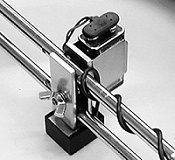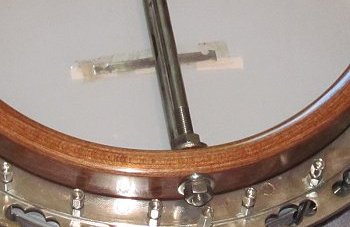
Home
Acoustic Instrument
Primers
What Kind of Guitar
Should I Start On?
What Kind of Banjo
Do I Want?
Evaluating and
Buying Used
Guitars
Setting Up
Fretted Instruments Whatever Happened
to the Banjo?
Beginning Five-
String Banjo
6-String Banjos
Banjo Pickups
What is a
Bluegrass Banjo?
What is a
Tenor Guitar?
Dean "Backwoods
Six" Shootout
Axes in my Life
Music Theory
Primers
Introduction
to Scales
Introduction
to Chords
Circle of Fifths
Other Articles
About Music
How to Give
Guitar Lessons
Musician or
Wannabe? Did God Really
Give Rock &
Roll to You?
Are You a
"Brand Bigot"?
Who Owns Folk Songs?
Historical Links
About the
National Road
The Story Behind
the Story - Real
People, Places,
and Events
About the Play
Play Home
What's New
Overview
About the
Music
About the
History
About the
Logistics
About the
Cast
Synopsis
About the
Set
About the
Author
Contact Us
Home



|

|

 Barcus Berry Banjo Pickup
Barcus Berry Banjo Pickup
| Written by Paul Race for Creek Don't RiseTM and School Of The RockTM |
After writing extensively about banjo pickups, and answering many reader questions, I came across a pickup that doesn't quite fit any of the categories I've defined so far. It hasn't been made for decades - in fact the manufacturer had almost no record of the thing when I contacted them for instructions. So it doesn't belong in the main article, but it's worth discussing, because it DOES work, and it has given me some ideas of things to try on other banjos.
This week, an attempt to organize the basement led to me sorting through several bins of miscellaneous music hardware, including patch chords, extra power supplies, and adapters of every possible kind. (Between 4 decades of playing "out" and about 25 years running a home studio, I've accumulated a lot of stuff.) I found the screws and nuts from a similar device that has long since been recycled, and realized they would fit the Barcus Berry. So the next time I had a chance to pop the back off my 6-string, I thought I'd give it a try.
The disadvantage is that mag pickups like the Gold Tone pick up only the vibration of the strings - not the head. So in many cases, the signal actually reaching the amp sounds more like an electric guitar than it does a banjo. (I have readers who have chosen the Gold Tone specifically for this reason, though.)
The Barcus Berry also borrows from the Because of advanced technology, the Fishman Rare Earth pickup also picks up a slightly higher frequency range than a standard mag pickup, leading to a truer banjo sound. (Several of the overtones that make a banjo sound different from any other plucked or strummed instrument are higher than the range of typical mag pickups. ).
I have no idea what the metal strip is made of, except that it must have an iron content. I'd feel worse about my ignorance, but Barcus Berry doesn't know either - I asked.
The little screws that fasten the brackets to the pickup have to be tightened from the back - a bit of a problem since they're now going into little nuts on the other side. To install the thing, I put the old screws and new nuts on the pickup, leaving room to slide the brackets underneath. Then I slid one bracket on and snugged it up completely - at least After I was sure that the pickup was firmly fastened to the brackets, I pulled it up, away from the head and snugged up the wing nut. The way the hole for the bolt is aligned, I could only separate the pickup from the shim by about 1/8", but that was plenty.
If you ever install anything like this, don't make the mistake of letting the pickup rest against the drum head, seriously deadening the instrument.
The little piece containing the jack fastens between two of the brackets, clamped in place by two phillips-head screws. Many, many banjo pickups use this kind of attachment for the jack.
Note: I would steer away from pickups that have a long wire that runs out of the banjo and plugs into the amp - eventually, you're going to get tired of being tethered, or someone's going to walk between you and the amp and snap the thing. Or - worse yet - damage your instrument if the pickup's fastened too well.
Once I decided where to put the jack, I wrapped the wire around the coordinator rods once to keep it from flopping around loosely. Then, I fished the little plug out through a hole in the resonator flange and plugged it into the jack. Then I replaced the resonator.
When I get a chance, I'll A/B this against other banjos with traditional mag pickups.
Here's a thought. As far as I can tell, the Barcus Berry is a standard single-coil mag pickup very similar to the Dean and Gold Tone mag pickups.
I'm not that thrilled with the sound that the mag pickup on my Dean Backwoods 6 electric-acoustic banjo puts out. Could I glue a little sliver of steel under the bridge and slide the mag pickup down so it picks up that instead of the strings? Worth a try, since I'm not a fan of transparent heads anyway. :-)
If that works, it might be worth experimenting with Gold Tone pickup the same way. We'll see.
BTW, why do I have both high-end and low-end six-string banjos? In a word: beaches. Also, why do I call the Dean Backwoods 6 electric-acoustic a "low end" banjo, even though it's priced in the midrange? Because, outside of the "pop-top" acoustic version of the same banjo, I haven't come across any cheaper 6-string banjo-like instruments that were anything but wall decorations.
Of course, the best way to hear a banjo is to be in the same room with one, and the best way to record one will always be with a microphone. But there's a lot to be said for being loud enough to be heard in bad acoustic situations. This is one area in which banjo technology tends to trail guitar technology by decades. But it will come.
In the meantime, please contact us with any additions, corrections, suggestions, or other feedback, and if it's printable, we'll add it here and give you credit.
Best of luck, all, enjoy your music, and carry the flame!
 The "new" old pickup is a Barcus Berry banjo pickup that came with the old 6-string Deering I acquired a few months back. When I got the banjo, the pickup was uninstalled, in a baggie in the storage compartment. I did a lot of work on that banjo (it still needs a little), and much of that work happened with the resonator off. So I considered reinstalling it at the time. But the little "ears" on the pickup where the screws were supposed to go were stripped out. So I waited until I could find the right size nut.
The "new" old pickup is a Barcus Berry banjo pickup that came with the old 6-string Deering I acquired a few months back. When I got the banjo, the pickup was uninstalled, in a baggie in the storage compartment. I did a lot of work on that banjo (it still needs a little), and much of that work happened with the resonator off. So I considered reinstalling it at the time. But the little "ears" on the pickup where the screws were supposed to go were stripped out. So I waited until I could find the right size nut.
About Barcus Berry
I discovered Barcus Berry back in the 1970s when I was playing my acoustic 12-string in a lot of different environments, clubs, coffeehouses, churches, festivals, etc. It seemed like everywhere I played I discovered a new way for the sound guy to destroy the sound of my guitar. We tried taking high-quality microphones, but sometimes the venue was too feedback-prone to use them with acoustic guitars. Mag pickups stretched across the hole just made the guitars sound electric. Then I discovered the Barcus Berry "Hot Dot," an early piezoelectric pickup that was only about 1/8" across, small enough to be glued right into the bridge. I bought three and installed one in my friends' guitar and two in mine (one on each side of the bridge). Most battery-powered guitar preamps in those days had no tone control, only volume, but they made the thing loud enough to feed the PA, which usually had tone control. Or if we had to go into a "snake," I had an adapter for that. Problem solved - almost. Later I discovered that Ovation's built-in piezo pickups produced an even better sound, and I converted, but for a while, at least, Barcus Berry "saved my life." Barcus Berry doesn't make the "Hot Dot" anymore, but they still rank among the best manufacturers of pickups for a wide range of instruments.
The "Competition"
 The old Barcus Berry Banjo pickup (also no longer made) looks a lot like the Gold Tone aftermarket banjo pickup
The old Barcus Berry Banjo pickup (also no longer made) looks a lot like the Gold Tone aftermarket banjo pickup , shown at the right. This is basically a magnetic pickup clamped to the coordinator rod(s). The advantages include resistance to feedback and output high enough to go right into a guitar amp or PA head without a preamp.
 Fishman Rare Earth Banjo Pickup
Fishman Rare Earth Banjo Pickup, shown to the left.
The Fishman uses a sort of magnetic pickup, but it also uses a little metal shim glued to the head of the banjo under the bridge. So the highly-customized pickup is actually picking up the vibrations of the banjo head instead of the strings.
How The Barcus Berry Banjo Pickup Works
 The Barcus Berry seems to be a sort of "poor man's Fishman." That is to say that it uses a mag pickup very similar to Gold Tone pickup. But instead of attempting to pickup the vibrations of the strings, it picks up the vibrations of a little metal strip attached to the head under the bridge (shown right).
The Barcus Berry seems to be a sort of "poor man's Fishman." That is to say that it uses a mag pickup very similar to Gold Tone pickup. But instead of attempting to pickup the vibrations of the strings, it picks up the vibrations of a little metal strip attached to the head under the bridge (shown right).
Installing the Barcus Berry Banjo Pickup
 one side would be tight. Then I slid it between the coordinator rods and the banjo head, over the shim. I loosely tightened the wing nut so I could tell if the pickup was reasonably centered over the bridge and the shim. Then I tightened the other little screw that held to bracket to the pickup. It snugged up nicely, to my relief.
one side would be tight. Then I slid it between the coordinator rods and the banjo head, over the shim. I loosely tightened the wing nut so I could tell if the pickup was reasonably centered over the bridge and the shim. Then I tightened the other little screw that held to bracket to the pickup. It snugged up nicely, to my relief.
Installing the Jack
 I then tried to figure out where I should put the little clamp-on jack. I have learned not to install these so that the plug interferes with the thumbscrew that holds the resonator on.
I then tried to figure out where I should put the little clamp-on jack. I have learned not to install these so that the plug interferes with the thumbscrew that holds the resonator on. Now What?
Conclusion
All material, illustrations, and content of this web site is copyrighted ? 2001, 2002, 2003, 2004, 2005, 2006,
2007, 2008, 2009, 2010, 2011, 2012, 2013, 2014, 2015, 2016 by Paul D. Race. All rights reserved.
Creek Dont' Rise(tm) is a participant in the Amazon Services LLC Associates Program, an affiliate advertising
program designed to provide a means for sites to earn advertising fees by advertising and linking to Amazon.com.
Note: Creek Don't Rise (tm) is Paul Race's name for his resources supporting the history and
music of the North American Heartland as well as additional kinds of acoustic and traditional music.
For questions, comments, suggestions, trouble reports, etc. about this page or this site, please contact us.
| Visit related pages and affiliated sites: | |||||
| - Music - | |||||

|
 |
 |

|

|

|

|

|

|

|

|

|

|

|

|

|

|

|
| - Trains and Hobbies - | |||||
 |

|

|  |
 |

|
| - Christmas Memories and Collectibles - | |||||
 |

|
 |

|
 |

|
| - Family Activities and Crafts - | |||||
 |

|

|

|

|

|
